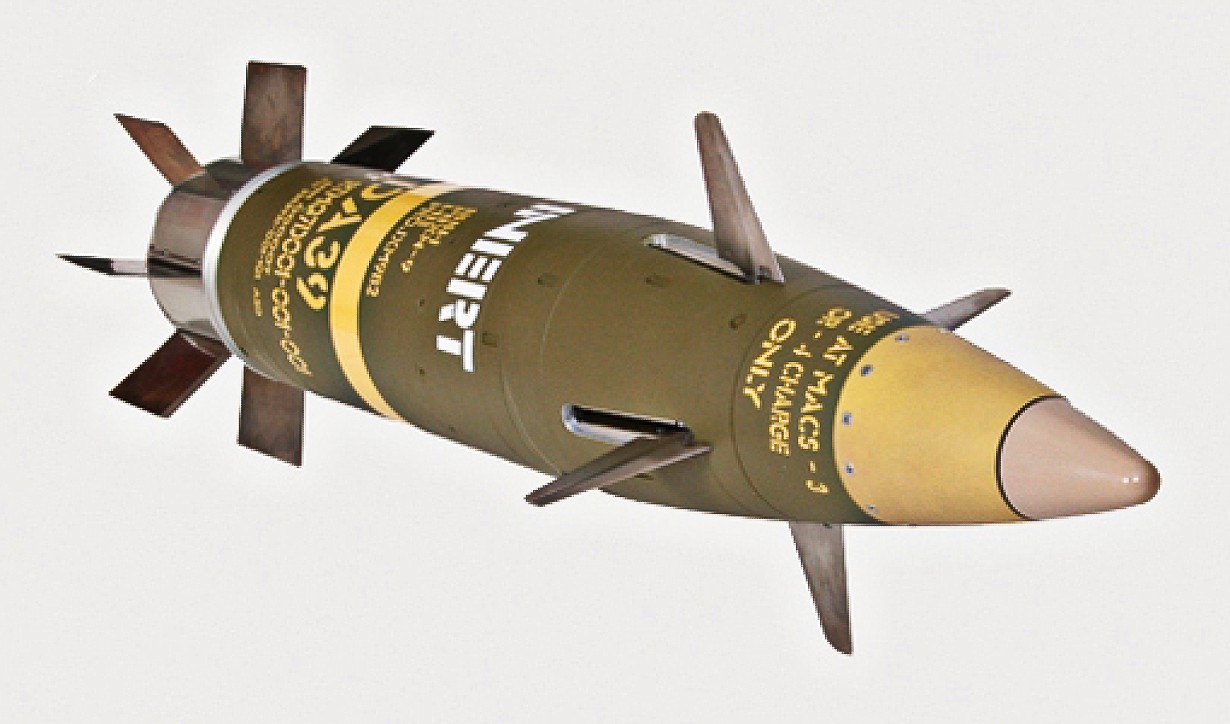The advanced long-range Ground-Launched Small Diameter Bombs (GLSDB) supplied by the United States to Ukraine are encountering major difficulties in hitting targets due to sophisticated Russian electronic jamming techniques. However, this is not the only weapon whose effectiveness has significantly dropped.
Despite bomb-maker Boeing’s praise for the weapon’s “highly jamming-resistant GPS” navigation system, these bombs are struggling to maintain accuracy posed by Russian countermeasures.
The GLSDB, a relatively new guided bomb developed by Boeing and Saab, boasts an impressive range of approximately 100 miles, achieved with the help of small wings that extend from its body.
Ukraine received these munitions in early February after months of requests for long-range capabilities to strike strategic targets, including those in Crimea.
The delivery was met with widespread enthusiasm, with military experts suggesting that these weapons could compel Russia to relocate its supplies farther from the front lines.

However, according to three sources familiar with the matter who spoke to Reuters, Russian jamming efforts are compromising the guidance systems of these bombs, resulting in a significant number of launches failing to reach their targets.
Russian forces are employing GPS spoofers to disrupt the trajectory of the munitions. These devices operate by transmitting erroneous location data to GPS navigation systems. Due to the relatively weak nature of GPS signals, a more powerful false signal can override accurate inputs.
Russia has been using GPS spoofing tactics in Ukraine since 2018. However, advancements in technology have facilitated the creation of spoofers at a low cost, requiring only a software-defined radio and open-source software.
Boeing and Saab had previously highlighted the GLSDB’s high precision and extended range, marketing its navigation system in 2022 as “supported by a highly jamming-resistant GPS.” Yet, despite these claims, one source indicated that it would take Boeing several months to address and rectify the jamming issues.
A Boeing spokesperson previously acknowledged the problem and stated that the company was “working closely with the [Defense Department] on spiral capability improvements to the ground-launch SDB system.” Spiral capability improvements refer to an iterative process of software development aimed at enhancing the weapon’s performance.
In late April, William LaPlante, the US undersecretary of defense for acquisition and sustainment, mentioned that a US-supplied precision weapon had encountered issues in Ukraine, partially due to electronic warfare. Although he did not specify the weapon, reports from Defense One indicated that it was likely the GLSDB.
Abrams Tank: Ukraine Adds “Double Shield” To US MBTs After Losing Out To Russian Kamikaze UAVs
Other Weapons Face Similar Issues
The conflict in Ukraine serves as a modern testing ground for Western arms, exposing vulnerabilities that were not previously encountered against rivals like Russia.
The GLSDB are not the only US-supplied weapons facing challenges due to Russian electronic jamming techniques.
According to the Washington Post’s sources, Kyiv halted certain American weapons, notably those relying on satellite guidance systems, after their accuracy plummeted.
The Excalibur artillery projectile (an extended-range, precision munition) shells and HIMARS (High Mobility Artillery Rocket System) systems are among the affected weapons, and accuracy has dropped significantly over recent months.
The success rate of Excalibur shells, for example, reportedly fell to less than 10 percent. This prompted Washington to halt deliveries six months after Ukrainian authorities reported the issue. Russian soldiers had once called the GPS-guided shells ‘most difficult’ to intercept and acknowledged as a much bigger threat than HIMARS.
A senior US official, speaking anonymously, noted that the Pentagon had anticipated such challenges and had been collaborating with Ukraine to counter Russian electronic warfare.
However, the effectiveness of these measures is diminishing as Russia’s use of electronic warfare tactics continues to evolve. The report said that even before the US ceased supplying Excalibur shells, Ukrainian operators had almost stopped using them due to their complexity compared to other munitions.
In a US Congressional testimony in March, Hudson Institute Senior Fellow Daniel Patt noted that the effectiveness of the GPS-guided Excalibur rounds dropped from 70 percent to 6 percent over several months due to new electronic warfare tactics in Ukraine.

Patt referenced the work of Jack Watling, an expert at the think tank RUSI who had interviewed Ukrainian Commanders multiple times.
Russian electronic warfare also poses challenges for Ukrainian pilots. The proposed introduction of modern F-16 fighters will bolster the Ukrainian Air Force’s ability to counter Russian aircraft.
Regarding HIMARS, the report added that while they initially succeeded in destroying Russian command stations and arms depots, Russian electronic warfare began to jam them in the second year of the war.
This reduced their effectiveness to the point where expensive shells were used against low-priority targets. Although Kyiv still values its HIMARS missiles, Russian jamming can cause them to miss by 15 meters or more.
Despite these challenges, the US continues to provide additional equipment for HIMARS to ensure accurate targeting, while Ukrainian forces employ various tactics, including drones, to counter Russian electronic warfare.
- Contact the author at ashishmichel(at)gmail.com
- Follow EurAsian Times on Google News




